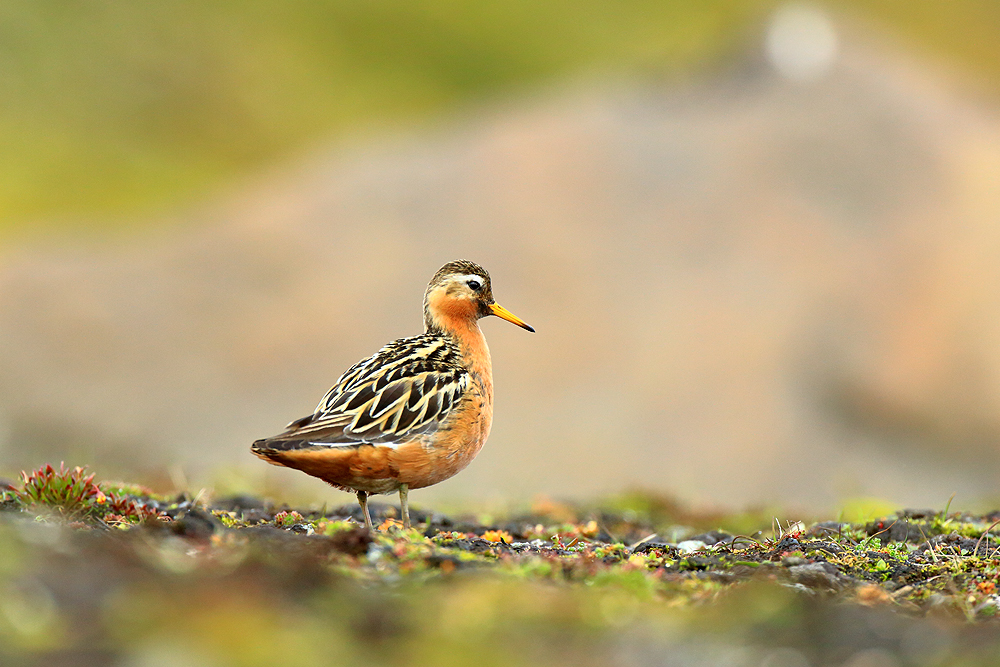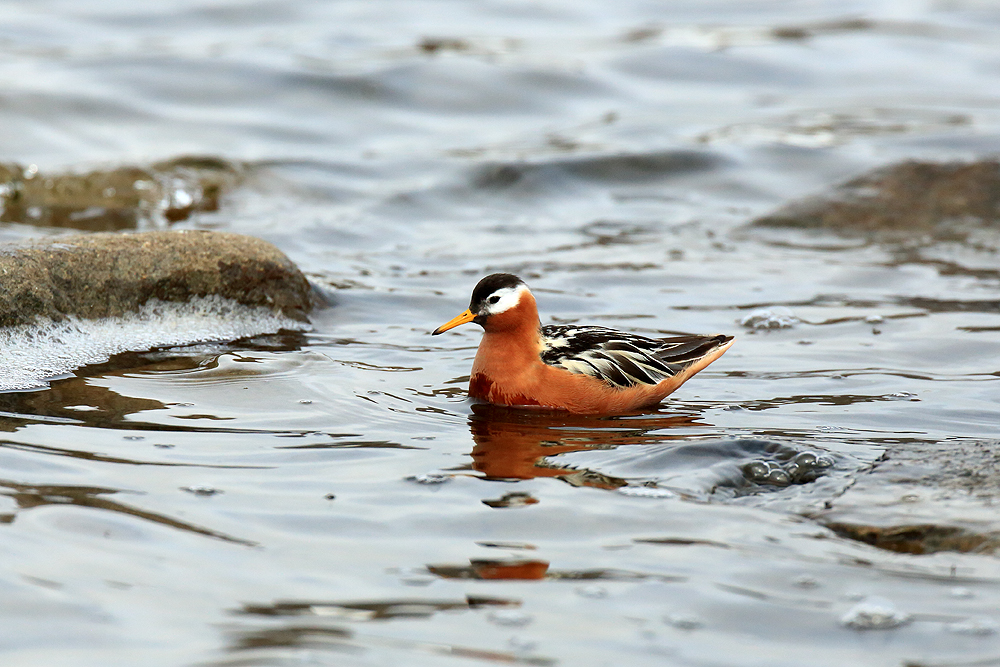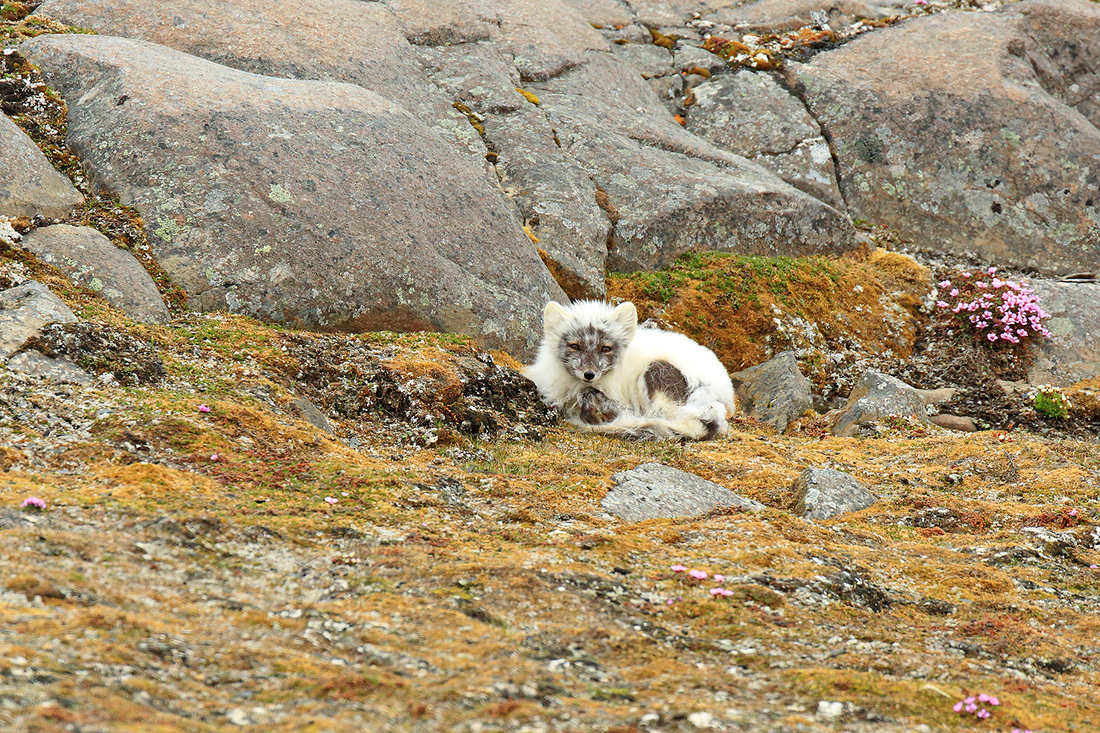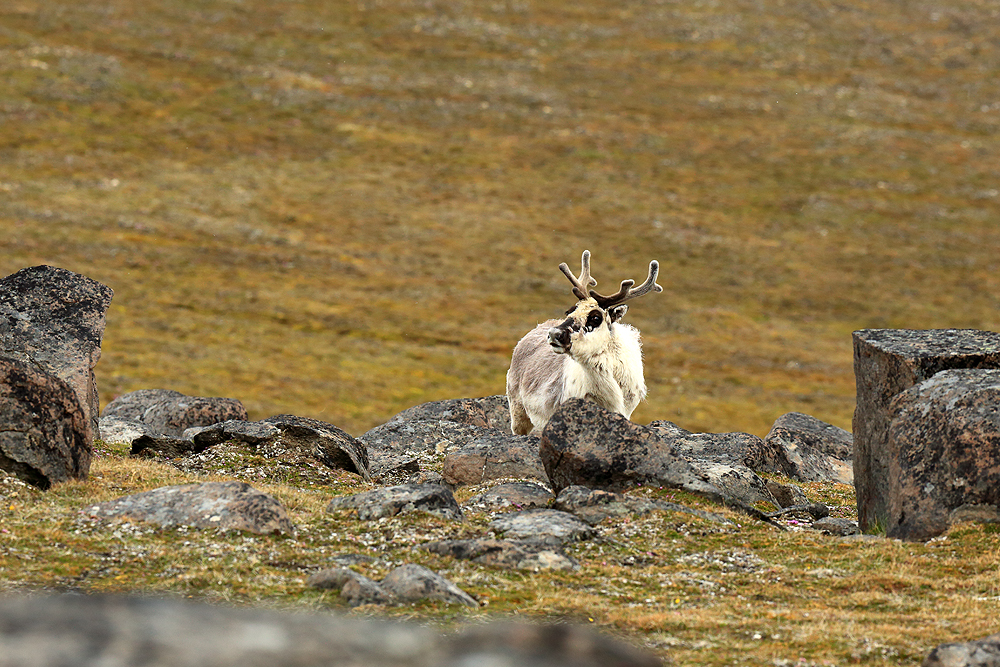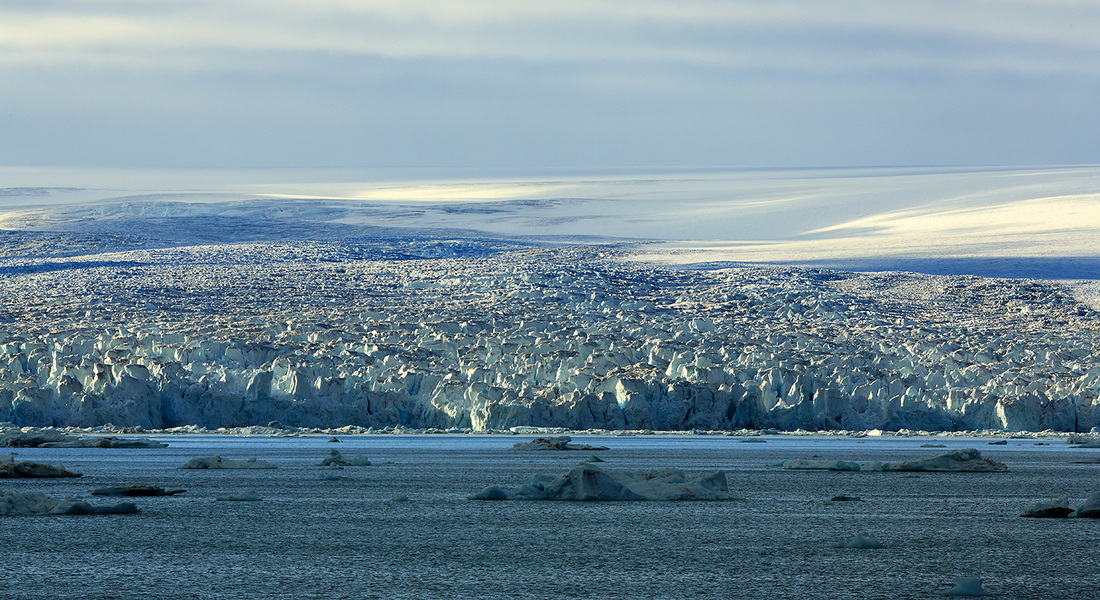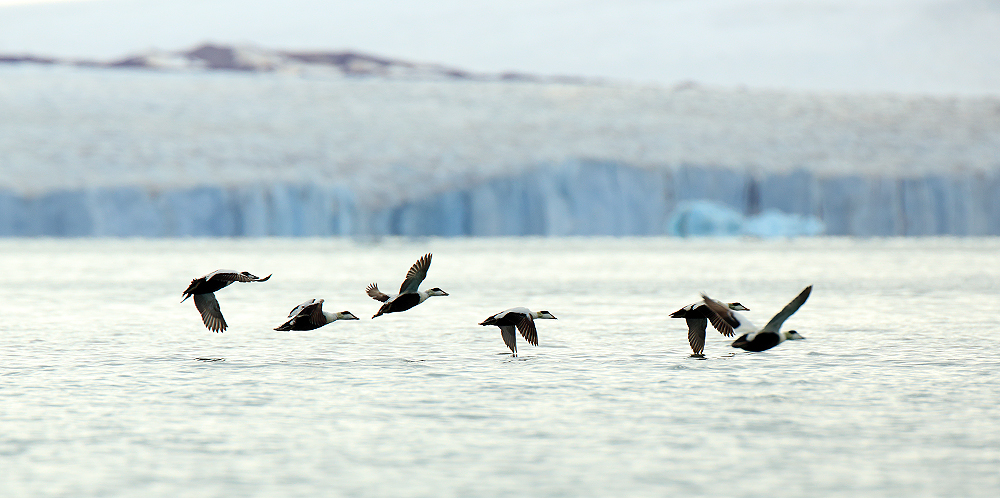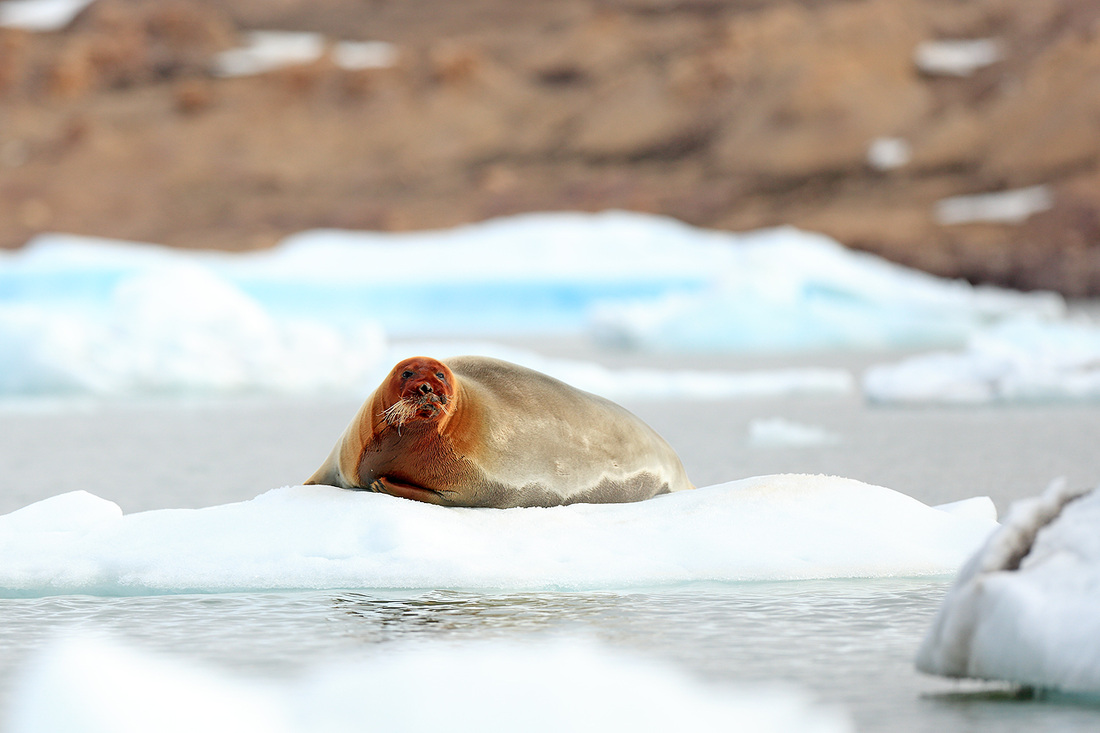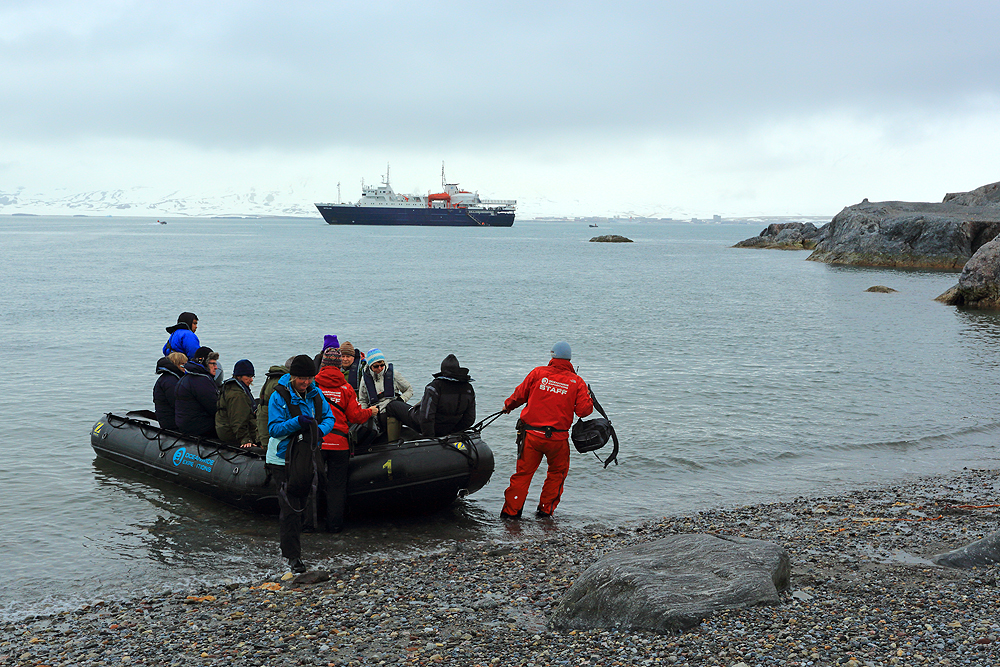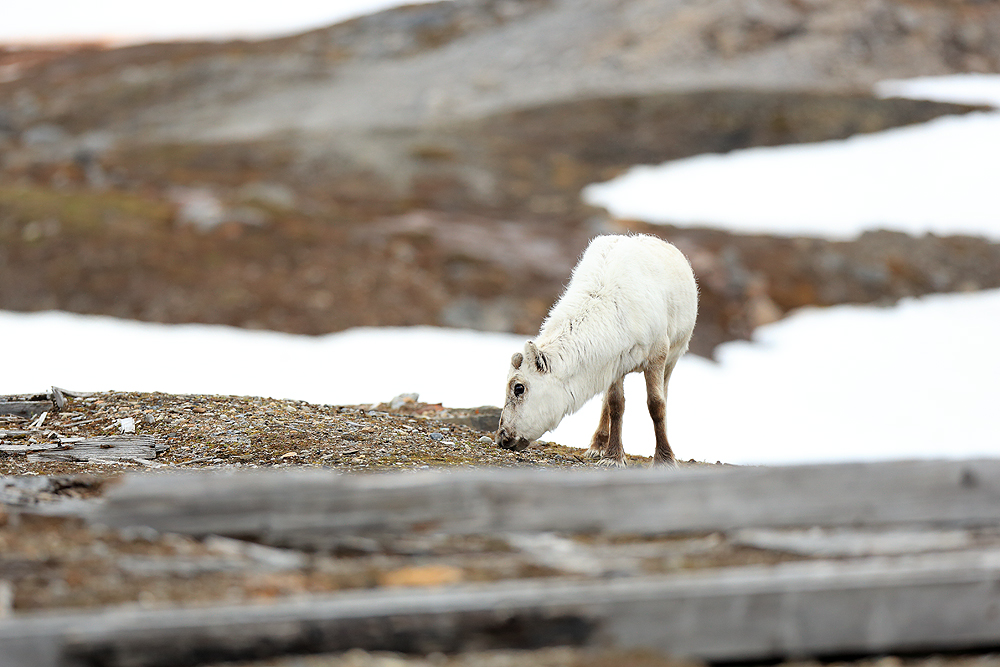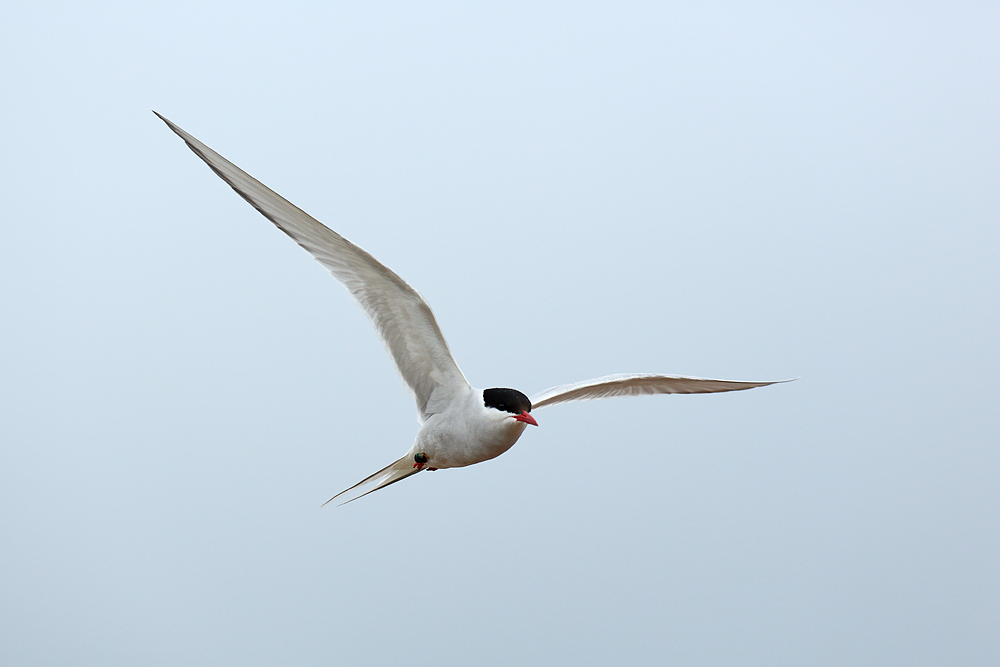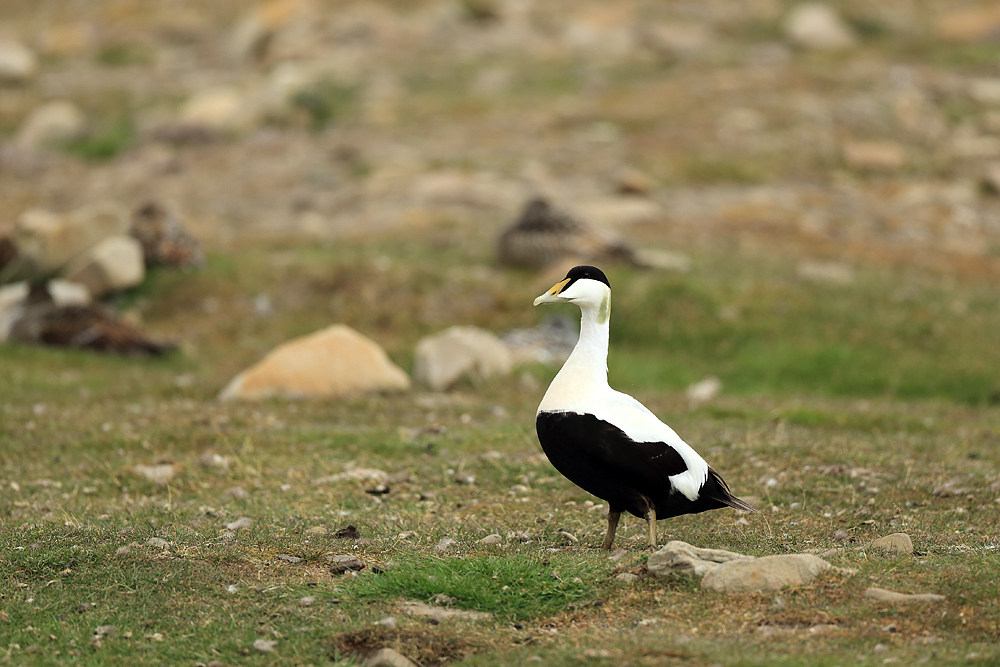|
Our planned landing site for this morning was Kapp Waldburg, a site for nesting Kittiwakes in a steep sided canyon. As we arrived at our landing point we heard over the loud speaker that there was a Polar Bear and we would have to head elsewhere to stretch our legs. From there we headed on towards the tundra habitat at Sundneset, once again as we approached the landing site the Polar Bear call went out again. This bear was very relaxed and the expedition team decided it would be safe to land slightly further down the coast and have the ship keep an eye on the bear's where abouts. As we landed we were greeted by a truly wonderful site, a stunning pair of Grey (or Red) Phalaropes were feeding only yards away from us. The male was particularly obliging, carrying on with its feeding as if we didn't even exist, the female on the other hand seemed to be rather skittish and wasn't a particularly good poser. Unusually for the bird world the female Grey Phalarope is actually the more beautiful. The males take care of the eggs and ensure they hatch before raising the chicks, the female visits a multitude of males and lays her eggs with a few of them ensuring that they have the best chance of survival. As we left the two phalarope to their own devices we headed inland across the tundra and had an unexpected but truly wonderful encounter. A very shaggy Arctic Fox was heading towards us and we were blessed with extraordinarily close views. The fox had not yet lost all of its winter coat and spent a bit of time rolling around doing its best to free itself from its Arctic jumper. There were also a few Svalbard Reindeer within the vicinity but they were all a little nervous around us. After spending a couple of hours on shore and aware that there was still a Polar Bear within the vicinity it was time to head back down to the Zodiacs and transfer back to the Ortelius. As we reached the landing site we realised that the male Grey Phalarope was still feeding and happy to pose for the photographers in the group. After another incredible lunch we set sail for Dolerittneset, the ship anchored and we were once again out on the Zodiacs heading for shore. I joined the hiking group and we climbed up into the misty hills that towered above the water. We really didn't see much except for a few reindeer and a couple of ptarmigan and even Stein (our Norwegian guide) seemed to find the climb hard work. I am sure on another day the views could have been superb but on this day the visibility was less then 20 metres.
We eventually headed back down towards the ship and had a look at the multitude of Walrus bones that littered the shoreline. This was once a great Walrus haulout but unfortunately they were nearly hunted to extinction in this area. There were a couple of individuals on the shore but no longer were there the numbers that once thrived here. Once we were back aboard the ship, we headed for the southern most tip of Spitsbergen and up towards the stunning fjord of Hornsund. This took us all night and most of the next morning but what was in store in Hornsund was something none of us ever expected, it was a day that will stay with me until the day I die ... keep reading to find out what Hornsund had in store.
2 Comments
This day didn’t start after a good night’s sleep … instead, we stayed up until midnight to welcome the midnight sun, the first time we had seen it on our voyage. I had to get a photo of me on the ship’s uppermost deck so sorry about the image below! What made this moment all the more special is that we were in Wahlenbergfjorden, this 50km long fjord is rarely visited and the depths are as yet completely uncharted. This really was an expedition voyage and we only found out, upon our return, that the advanced sonar had been damaged earlier on in the trip … we were sailing relatively blind following a previous expedition’s navigation. There was also a Polar Bear on a piece of fast ice (ice that is attached to the shore) and it was obviously hunting seals but eventually it was so small that we called it a night and headed off to finally get some sleep. The next morning the weather was a lovely 5 degrees Celsius with the sun still shining down upon us. It was a morning for a Zodiac cruise and in the night the Polar Bear had come past the ship to another piece of fast ice and was obviously hunting seals. We approached this ice, the Zodiac drivers beached the front of the boats on the ice but the bear was still at quite a distance. We decided to turn our attentions to the magnificent bird life that seemed to be all around us. There were Arctic Terns, Grey (Red in America) Phalaropes, Common Eider, King Eider, Long-tailed Ducks, Glaucous Gulls and a Ruddy Turnstone that I just could not photograph! It was an amazing place but not the easiest to photograph in. We headed off to one of the many glaciers that flowed down into the fjord from the huge ice sheet and a seal was spotted on a small ice floe. This was another huge Bearded Seal, this time with a very red head due to the iron ore deposits that stain the sea bed. As the seal feeds and searches in the sediment at the fjord’s bottom, it manages to stain its fur with this intense natural dye. The next half an hour or so was an amazing close encounter with this large marine mammal and it was only when we got within a few metres that we realised this individual had been through the wars. Its face, as you can see, was terribly scarred as were it sides. It seemed a Polar Bear had once tried to catch this seal but had failed, forever leaving its mark upon its intended prey. We left the seal alone and made our way through the mass of ice that had calved from the glacier, before heading back to the Ortelius for a spot of lunch. This was truly a wild and remote place, with amazing scenery and fabulous wildlife one could not really have asked for more. As we cruised out of this stunning fjord we were greeted by the amazing sight of three individual Humpbacks feeding, at times only 25 metres from the ship. After about an hour with these huge cetaceans we had to continue onwards towards Torellneset, where we would hopefully find a Walrus haul-out. We had an early dinner before heading out onto the Zodiacs and landing on the shingle bank at Torellneset. There we were, on a remote beach in the High Arctic with a large group of Walrus … a truly remarkable experience. We were photographing these blubber behemoths on the beach when our guide Mick waded into the water and started to ‘tap dance’. What happened next was amazing ... There were already Walrus in the water and Mick's little dance routine (he was really just paddling) seemed to create enough noise to lure in the curious Walrus. They don't really have any natural predators and are curious about things that are in their territory. It was amazing just how close these amazing mammals came and it made for some stunning photographic opportunities. At times, they were so close that I was unable to take any photos ... I just had to sit, watch and enjoy the moment (I can cope with that). After some extreme close ups of these inquisitive Walrus they backed off a bit and there was even a bit of a scuffle between two individuals. One seemed to have a bit of an itch and started to roll on the rough beach to ease its discomfort. Our guide Mick was still standing in the shallow water watching intently. What an incredible day it was, it can be so easy to go overboard with superlatives when visiting somewhere like Svalbard but it is the only way one can describe this remarkable destination (you see I just can't help it). The days can be long in the Arctic, this was certainly one of those days but you could never say that it dragged. It was action-packed and the sheer variety on offer was astounding (there's another one!). After a day like today, you wonder what on earth could be in store tomorrow and how could it possibly compete with a day like this? The next day was going to be a little different but still great for photography ...
With our first night at sea, we were up bright and early for the first of many amazing breakfasts before a briefing on our first Zodiac excursion. This morning we were visiting an area where a historic British marble quarry once operated but is now favoured by Svalbard Reindeer and Long-tailed Skua. This was our first landing and so it was our first time venturing into Polar Bear territory. In fact, it turns out that anywhere on land is bear country as is anywhere at sea! We quickly spotted our first Svalbard Reindeer and we managed to get a few photographs in the gloom of the morning. As we walked across the tundra for the first time we saw plenty of Snow Bunting, our first Red-throated Diver, Long-tailed Duck, Purple Sandpiper, Brent Geese and the stunning Long-tailed Skua! We had a great introduction to the Arctic ecosystem in the morning with our visit to Ny London before having a superb lunch (in fact all the food throughout the trip was just "fantastic"). In the afternoon we would be visiting the northerly town of Ny Alesund where there are breeding Arctic Tern and sometimes some Arctic Foxes, the small settlement is primarily a research centre having originally been built for a coal mine but it is also home to the world's most northerly post office! It was the wildlife that was to feature and we had another yet another Zodiac transfer to the small dock and we were then free to wander (with a perimeter of armed guards around the settlement). A great day all round and a really educational first full day in the Arctic. We knew that tomorrow would be our first day in the "High Arctic" and we were all very excited indeed. Another night's worth of cruising and we would start to be in a really wild landscape!
Where do I begin ... well let's say that I was very lucky to be offered a place on Naturetrek's Spitsbergen cruise, with the staff discount, with only a couple of weeks notice. Of course I jumped at the chance and flew out to Oslo before heading to the Arctic Circle, I could not believe it was all happening. Anyway upon arrival on the island of Spitsbergen, in the charismatic and rather cold town of Longyearbyen, we awaited to board our ship an so I headed off with my colleague Simon to find some local wildlife. It wasn't long before we were being dive-bombed by breeding Arctic Terns, for such small birds this is truly quite disconcerting. As well as the terns there was also a breeding colony of Common Eider (ducks) all nesting in this cool Arctic habitat. So without further ado, here are a selection of images from that afternoon before we headed to our vessel for the trip ... M/V Ortelius. (The light was pretty gloomy so the images are mere record shots.) We boarded the Ortelius, our home for the next seven nights, and attended the mandatory safety demonstrations and drills. It was then time to head out on deck and start our wildlife watching with binoculars and cameras at the ready, we were keen and expectations were high all round. We were followed, almost instantly, by Fulmars (which follow the ship for the possibility of an easy meal) and these provided some challenging but fun photographic subjects. We were only a couple of hours in when the shout went out for whale and sure enough, there were a small group of whales on the horizon. They weren't just any whales ... they were a group of Blue Whale!!!!! So what a first day, I have always wanted to see a Blue Whale and I never expected to see them on this trip. So after staying up until nearly midnight and still have perfect light I made the brave decision to go to bed. The night was uneventful and so I slept through until the next morning where we would go for our first Zodiac excursions.
|
AuthorBret Charman Archives
July 2024
Categories
All
|


